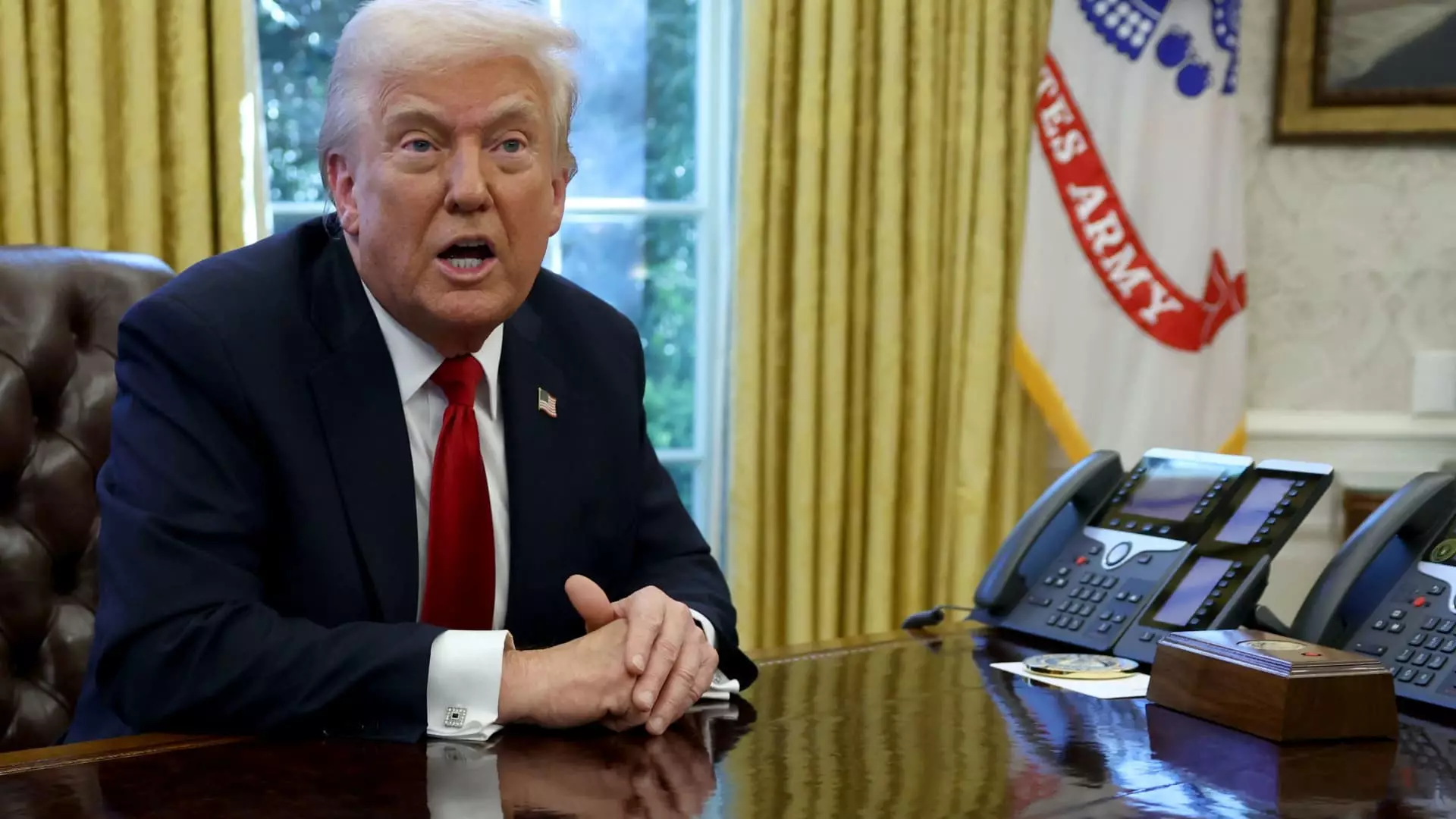When President Donald Trump announced his intention to impose a staggering 25% tariff on all vehicles not manufactured in the United States, he raised eyebrows across various sectors, emphasizing a so-called patriotic agenda. But the notion of shielding American manufacturing through tariffs raises pertinent questions both about efficacy and unintended consequences. While the idea of protecting domestic industries seems noble on the surface, the practical implications warrant a much deeper examination.
Tariffs by their very nature act as a double-edged sword. They may provide a temporary lift to manufacturers operating stateside by making imported goods more expensive, but they simultaneously elevate costs for consumers and encourage retaliatory measures from trading partners. In Trump’s case, the claim that this initiative could be either “net neutral” or “good” for companies like Tesla is dangerously optimistic at best.
Elon Musk: An Unlikely Ally
The involvement of Elon Musk, Tesla CEO, further complicates this narrative. As a key advisor and financial backer to Trump, Musk’s dual roles as an entrepreneur and Washington influencer present a fascinating paradox. Trump suggested Musk did not voice his concerns regarding the tariffs due to a potential conflict of interest, which certainly raises eyebrows. Musk’s influence within the administration at a time like this begs the question: is he genuinely looking out for American innovation, or is he merely protecting his own interests?
In perhaps the most theatrical gesture of support, Trump recently transformed the South Lawn into a temporary Tesla showroom. While this charade was likely intended to showcase American manufacturing prowess, it felt more like a PR stunt meant to highlight the administration’s ties with one of the nation’s most recognizable business figures. Yet, during this spectacle, subtle hints of skepticism lingered in the air—how would Tesla withstand the increased financial burden should tariffs lead to rising production costs?
The Realities of Supply Chains
Tesla has already communicated its concerns about the limitation of domestic supply chains, stating that even with aggressive localization, sourcing particular parts remains a daunting challenge. This dilemma makes it abundantly clear that while tariffs might protect certain sectors, they can also stifle innovation. The automotive industry thrives on global collaboration, and a policy that erects artificial barriers does not foster an environment conducive to growth.
Furthermore, competitors like China’s BYD, which remain completely barred from the U.S. market, represent a larger issue of market accessibility that tariffs alone cannot rectify. While tariffs may shield American manufacturers in theory, they also risk isolating U.S. firms from the robust competitive advantages that come from a healthy international marketplace. In light of this, Trump’s proposal may inadvertently aid foreign competitors while punishing American consumers and businesses alike.
Future Implications for American Consumers
The broader consumer base must also be considered. The sudden increase in vehicle costs due to tariffs will not exist in a vacuum. Consumers seeking quality, affordability, and innovation in their purchasing decisions may find themselves cornered. Forcing them to pay more for less variety does not align with the principles of a free market—a concept that the center-right is typically eager to champion.
The initial declarations from domestic manufacturers, like Ford and General Motors, hinting at stock declines following tariff announcements indicate that the market has already started to react negatively. While the hope is that domestic manufacturing will bloom under this protective umbrella, the potential for a downturn in consumer confidence should not be understated.
The Long-Term Picture
As we look toward the future, this proposed tariff strategy could epitomize a misguided economic approach that loses sight of innovation’s vitality. In seeking a quick fix to revive American industry, sufficient attention must be paid to the ramifications of such sweeping policies—especially in an era where technology and automotive manufacturing are evolving at breakneck speed.
While the intention behind Trump’s tariffs might stem from a natural desire to bolster American enterprises, the reality is that policies built on isolationist principles often serve more to hinder than to facilitate progress. As a nation, we must value collaboration, both domestically and internationally, and seek solutions that encourage growth across all sectors rather than stifle it.

